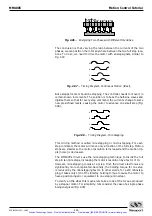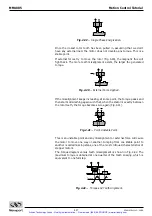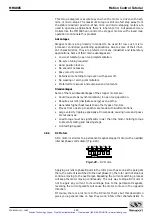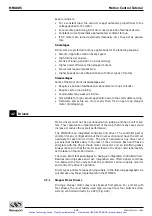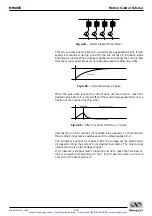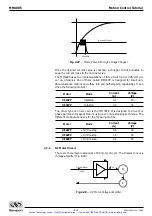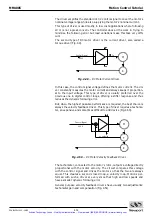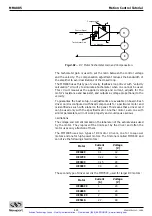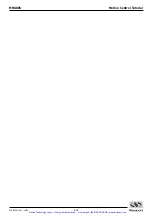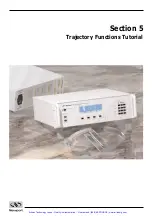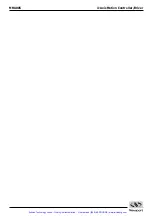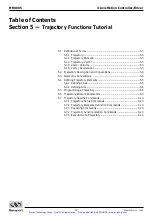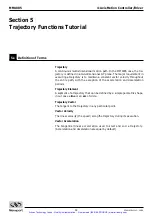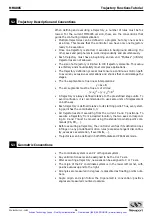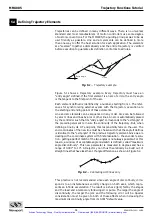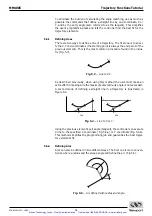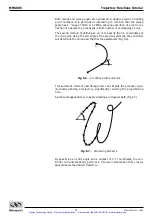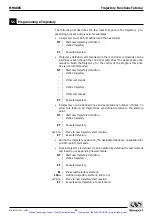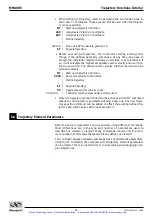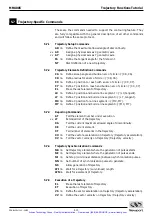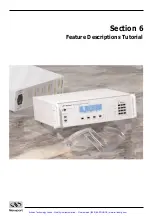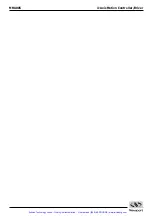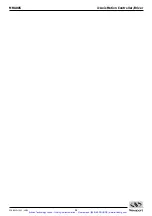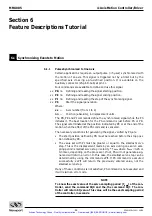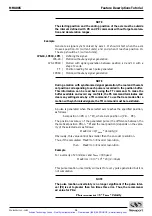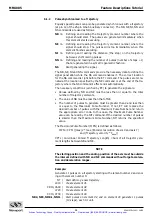
EDH0162En1040 – 06/99
5.4
MM4005
Trajectory Functions Tutorial
Trajectory Description and Conventions
When defining and executing a trajectory, a number of rules must be fol-
lowed. For the current MM4005 version, these are the conventions that
guide the contouring implementation:
• Multiple trajectories can be defined in a program but only one is active
at a time. This means that the controller can have only one trajectory
ready to be executed.
• Once one trajectory is started, it executes in background allowing the
other axes and peripherals to work independently and simultaneously.
• Each trajectory must have a beginning and an end. “Endless” (infinite)
trajectories are not allowed.
• The size of a trajectory is limited to 100 trajectory elements. This value
is arbitrary and should satisfy most complex applications.
• The trajectory definition process must ensure a continuous motion path
to avoid any excessive accelerations and shocks that could damage the
stages.
• The line segments are true linear interpolations:
y = Ax + B
• The arc segments must be true arc of circles:
(x - x
0
)
2
+ (y - y
0
)
2
= R
2
• A trajectory is always defined relative to the pre-defined stage units. To
avoid confusion, it is recommended to use same units of displacement
on both axes.
• Each trajectory is defined relative to its starting point. Thus, every start-
ing point has the coordinates 0, 0.
• All trajectories start executing from the current X and Y positions. To
execute a trajectory from a desired location, the two axes correspond-
ing to X and Y must be moved using the standard point-to-point com-
mands (PA, PR, …).
• Before executing a trajectory, the controller verifies if its definition does
infringe on any pre-defined motion rules (excessive tangent discontinu-
ity, excessive acceleration, travel limits, …).
• Trajectories can be defined in both IMMediate and PRoGram mode.
Geometric Conventions
• The coordinate system is an X-Y orthogonal system.
• Any valid motion axis can be assigned to be the X or Y axis.
• After executing a trajectory, new axes can be assigned to X or Y axis.
• The origin of the X-Y coordinate system is in the lower left corner, with
positive values up and to the right.
• All angles are measured in degrees, represented as floating points num-
bers.
• Angle origin and sign follow the trigonometric convention: positive
angles are measured counter-clockwise.
5.3
5.2
Artisan Technology Group - Quality Instrumentation ... Guaranteed | (888) 88-SOURCE | www.artisantg.com

